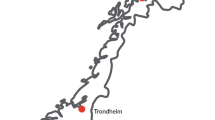Abstract
Purpose
The objectives of this study were to assess the frequency, types, and potential determinants of complementary and alternative medicine (CAM) use, and consideration of CAM use, collected from parents with children during the palliative phase of disease.
Methods
Eligible parent respondents were identified by their primary care team. Demographic information and questionnaires were completed by the parent in the presence of a research nurse (DT). We conducted univariate logistic regression to identify predictors of parents who considered CAM use and children who actually used CAM. Descriptions of types of CAM were categorized according to the National Center for Complementary and Alternative Medicine.
Results
A total of 77 parents participated. Only 22 children (29%) had received some type of CAM, with 42 parents (55%) having considered its use for their child. Whole medical systems (n = 17) and biologically based therapies (n = 15) were the most frequently considered CAM, with whole medical systems (n = 6) being the most frequently used CAM. Family and disease variables were not indicative of CAM use. However, parents with higher education and those with a family member with cancer were more likely to consider CAM use, while parents were less likely to consider CAM as children were farther from time of relapse.
Conclusions
The study provides initial insight into CAM use, and consideration of use, in children with cancer receiving palliative care. Further research is required to determine if the gap between CAM use and consideration is important, why this gap exists, and whether CAM has beneficial effects in this population.
Similar content being viewed by others
References
Barrera M, D’Agostino N, Gammon J, Spencer L, Baruchel S (2005) Health-related quality of life and enrollment in phase 1 trials in children with incurable cancer. Palliat Support Care 3:191–196
Bishop FL, Prescott P, Chan YK, Saville J, von Elm E, Lewith GT (2010) Prevalence of complementary medicine use in pediatric cancer: a systematic review. Pediatrics 125:768–776
Craft AW (2000) Childhood cancer–mainly curable so where next? Acta Paediatr 89:386–392
Health Canada (1999) Cancer mortality population and public health branch. Available at: http://www.hc-sc.gc.ca/pphb-dgspsp/publicat/meas-haut/mu_i_e.html. Accessed 15 September 2010
Laengler A, Spix C, Seifert G, Gottschling S, Graf N, Kaatsch P (2008) Complementary and alternative treatment methods in children with cancer: a population-based retrospective survey on the prevalence of use in Germany. Eur J Cancer 44:2233–2240
Martel D, Bussieres JF, Theoret Y, Lebel D, Kish S, Moghrabi A, Laurier C (2005) Use of alternative and complementary therapies in children with cancer. Pediatr Blood Cancer 44:660–668
Masera G, Spinetta JJ, Jankovic M, Ablin AR, D’Angio GJ, Van Dongen-Melman J, Eden T, Martins AG, Mulhern RK, Oppenheim D, Topf R, Chesler MA (1999) Guidelines for assistance to terminally ill children with cancer: a report of the SIOP Working Committee on psychosocial issues in pediatric oncology. Med Pediatr Oncol 32:44–48
Molassiotis A, Cubbin D (2004) ‘Thinking outside the box’: complementary and alternative therapies use in paediatric oncology patients. Eur J Oncol Nurs 8:50–60
Nathanson I, Sandler E, Ramirez-Garnica G, Wiltrout SA (2007) Factors influencing complementary and alternative medicine use in a multisite pediatric oncology practice. J Pediatr Hematol Oncol 29:705–708
Post-White J, Fitzgerald M, Hageness S, Sencer SF (2009) Complementary and alternative medicine use in children with cancer and general and specialty pediatrics. J Pediatr Oncol Nurs 26:7–15
Roth M, Lin J, Kim M, Moody K (2009) Pediatric oncologists’ views toward the use of complementary and alternative medicine in children with cancer. J Pediatr Hematol Oncol 31:177–182
Scrace J (2003) Complementary therapies in palliative care of children with cancer: a literature review. Paediatr Nurs 15:36–39
Thobaben M (2009) Complementary and Alternative Medicine (CAM) therapies: which are your clients using? Home Health Care Manag Pract 21(3):211–213
Tomlinson D, Bartels U, Hendershot E, Constantin J, Wrathall G, Sung L (2007) Challenges to participation in paediatric palliative care research: a review of the literature. Palliat Med 21:435–440
Tomlinson D, Capra M, Gammon J, Volpe J, Barrera M, Hinds PS, Bouffet E, Geenberg ML, Baruchel S, Llewellyn-Thomas HA, Sung L (2006) Parental decision making in pediatric cancer end-of-life care: using focus group methodology as a prephase to seek participant design input. Eur J Oncol Nurs 10:198–206
Acknowledgement
This project was supported by an Operating Grant from the National Cancer Institute of Canada (grant #016388). LS is supported by a New Investigator Award from the Canadian Institutes of Health Research.
Conflicts of interest
No authors have any conflict of interest to declare. All authors have full control of all primary data and agree to allow the journal to review this data if requested.
Author information
Authors and Affiliations
Corresponding author
Appendices
Appendix 1
Appendix 2
Rights and permissions
About this article
Cite this article
Tomlinson, D., Hesser, T., Ethier, MC. et al. Complementary and alternative medicine use in pediatric cancer reported during palliative phase of disease. Support Care Cancer 19, 1857–1863 (2011). https://doi.org/10.1007/s00520-010-1029-0
Received:
Accepted:
Published:
Issue Date:
DOI: https://doi.org/10.1007/s00520-010-1029-0




